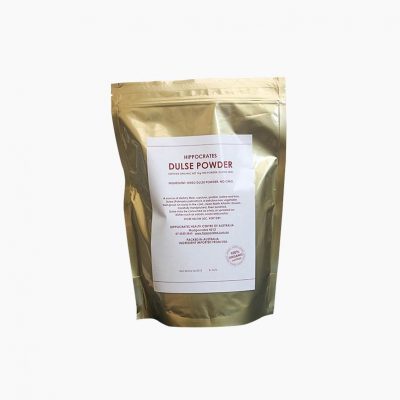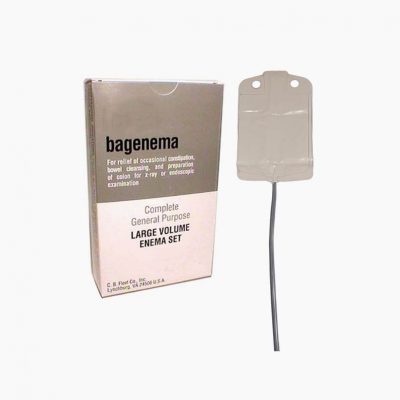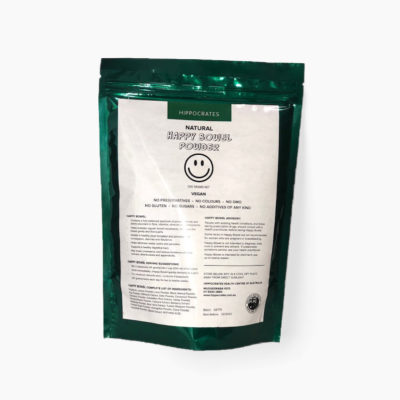No fancy equipment, no cost, no waiting to see the GP – welcome to the quickest and easiest health check-ups yet. These simple tests, which you can do in the comfort of your own home, are surprisingly revealing about the state of your health. Best of all, they each take only a minute or so to do…
WINDOW TEST TO CHECK YOUR SIGHT
Do this: Look at a door frame or large window frame from across a room, first with your right eye only (put your palm over your left eye for 30 seconds), then your left eye only.
What it means: You should be able to see the edges of the frame as vertical and horizontal parallel lines. If the door frame edges appear to have any kinks or are distorted in any way, or they bow in or out, this may indicate that you have macular degeneration.
It comes in two forms, wet and dry. With the wet form, which is more aggressive, tiny blood vessels grow under the retina – the light-sensitive patch at the back of the eye. These blood vessels leak, damaging the macula (a tiny spot at the back of the eye that is responsible for central vision).
With the dry form, a build-up of waste products dislodges the macula.
One of the first signs of age-related macular degeneration (AMD), which is common in the over-50s and can lead to blindness, can be wavy, broken or distorted lines or a blurred or missing area of vision.
However, you might not notice it as you go about your day-to-day activities as the eyes compensate for mistakes in our vision.
Windows with lots of small panes of glass are excellent for this test, or you might want to take a look at an Excel spreadsheet – use your reading glasses if you wear them, as these will magnify lines.
If you have been told (by your doctor or optician) that you are at risk of AMD, you should let your doctor know within 24 hours of doing this test. Even for the general population, it is important to see an optician very quickly and ask for a review.
SPOON AND BAG TEST FOR BAD BREATH
Do this: Scrape the edge of a teaspoon along the top of your tongue as far back as possible, seal the spoon in a plastic bag and sit it under a bright lamp for one minute – then sniff.
What it means: A healthy tongue coating should be clear, but if the coating that comes off on the spoon is thick, coloured or smells unpleasant, it could be an early sign of problems with your respiratory system, your liver, kidneys, hormones or gut.
This test is the closest indicator of how your breath smells to other people. A sample from the back of the tongue is key because a coating of bacteria can build up more easily here (unlike the front of the tongue, which cleans itself as it rubs against the teeth and roof of the mouth). The hot lamp grows the bacteria – and amplifies the odour.
A fruity smell could indicate ketoacidosis (when your body burns fat for energy, which can be a sign of diabetes), an ammonia smell could be kidney problems and other smells can indicate gastric or lung problems.
But be reassured, research suggests that 90 per cent of all cases of halitosis (bad breath) have a less sinister oral origin (gum disease, infected tonsils, cracked fillings or tooth decay), so see your dentist.
CUSHION TEST FOR FURRED ARTERIES
Do this: Lie on a bed or sofa and elevate both legs to a 45-degree angle on cushions. Hold them there for one minute then quickly hang your legs down over the side of the bed or sofa at 90 degrees.
What it means: If one or both of your feet become very pale when elevated but take several minutes to return to a normal pink colour, or become bright red when hanging, you could have blocked arteries and an increased risk of heart disease.
This test checks for peripheral arterial disease (PAD), where the arteries that supply the leg muscles become furred up. Risk factors include high blood pressure, high cholesterol and diabetes. Up to 20 per cent of over-65s have PAD.
In healthy people the normal pink colour should return within 10-30 seconds. But for people with severely blocked arteries it can take several minutes, and the feet may go very bright red in the second part of the test.
The redness occurs as tiny blood vessels expand in an attempt to counteract the poor blood flow.
However, this test can give a false positive in healthy people (it could be sign of poor circulation linked to Raynaud's disease – where the blood vessels contract in the cold).
So before you worry about PAD, additional signs to look for are cramping, pain and tiredness in the legs while walking or climbing stairs. If you can walk a mile at a fast pace non-stop, you are unlikely to have significant arterial disease.
BURP TEST FOR STOMACH ACID
Do this: Tip a heaped teaspoon of bicarbonate of soda into a small glass of tap water, stir and swallow immediately on an empty stomach.
What it means: A loud burp within five minutes can indicate healthy levels of stomach acid – mixing sodium bicarbonate with stomach acid (or hydrochloric acid) creates a reaction that gives off carbon dioxide gas, which causes burping.
Levels of stomach acid usually decline after the age of 40, causing poor digestion, poor absorption of nutrients (because food is not properly broken down) and vulnerability to tummy upsets (stomach acid helps to 'sterilise' its contents). Paradoxically, low levels of the acid can cause heartburn because, to compensate, the body throws the little acid there is to the top of the stomach and it can get into the oesophagus.
If you think you have low levels of stomach acid, avoid using antacids as they can make it worse.
CLOCK TEST FOR DEMENTIA
Do this: Draw a clock by hand on a piece of paper, add the numbers and make the hands point to 3.40.
What it means: Any difficulty drawing the clock (if the numbers aren't in the correct order, for instance) may be a sign of mild cognitive impairment or early dementia. Score one point for a closed circle, one for properly placed numbers, one for including all 12 numbers and one for properly placed hands.
Four points indicates good cognitive health; anything less could be a cause for concern. This test taps into a wide range of cognitive abilities including memory and problem-solving as well as 'executive' functions, such as planning. Studies have shown it's a good predictor of cognitive health.
If any signs in your drawing concern you, see your GP immediately.
CROSS-LEGGED SQUAT FOR AGILITY
Do this: Stand in front of a mirror and lower yourself into a cross-legged sitting position on the floor without using your hands for support or kneeling, then return to standing. (Do not attempt this if you have arthritic knees or hips.)
What it means: Aim to get down and up again without support.
To work out your score, start at ten and subtract one point each time you have had to use a hand or knee for support, and half a point every time you wobble – you should aim to score eight or above.
This is a test of muscle strength, balance, flexibility and agility. In a study published last year in the European Journal of Preventive Cardiology, researchers found that adults over 50 who could do this without wobbling or using their hand for support lived longer.
Those who scored less than eight were twice as likely to die within the next six years from all causes as people with perfect scores.
You have to be fit and flexible to do the test, and being limber may reflect having healthy, flexible cardiac arteries, according to researchers from the University of North Texas and several Japanese universities.
Supple arteries allow blood to move freely through the body, while stiff arteries require the heart to work much harder. Over time, this may lead to a risk of heart disease and stroke.
The researchers asked healthy adults between the ages of 20 and 83 to sit on the floor with their legs outstretched and then to bend forward to touch their toes.
Using blood-pressure cuffs at each person's ankles and arms, they estimated how flexible the volunteers' arteries were. Those with poor results also tended to have relatively stiff arteries.
Your score should improve with practice and regular flexibility exercises such as yoga or Pilates.
WOBBLE TEST FOR FAULTY THYROID
Do this: Stretch out your hand, palm down, and place an A4 piece of paper on top.
What it means: If the paper trembles or shakes excessively, you could have an over-active thyroid gland (hyperthyroidism).
A fine tremor of the hands is a sign of thyrotoxicosis (excessive amounts of thyroid hormones).
The movement could be too small to see on its own, but the sheet of paper accentuates any shaking.
A slight tremble is, however, very common, and can be caused by caffeine, asthma medication, anxiety or low blood-sugar levels.
It can also be a sign of early Parkinson's disease (though in this case the tremor is more likely to appear when the hand is at rest rather than when muscles are in use).
Hyperthyroidism is particularly common in women, who are four times more likely than men to have it.
It occurs when the thyroid gland produces too much of the hormone thyroxine, causing the body's functions to go into hyperdrive, leading to a racing pulse and twitchy muscles, as well as possibly unexplained weight loss, anxiety, mood swings and difficulty sleeping.
The paper test can help pinpoint a diagnosis for symptoms, which could easily be blamed on other conditions (such as stress or the menopause).
CHAIR TEST FOR RISK OF FALLS
Do this: Measure a 3m distance and place a dining chair at one end. Ask a friend to stand at the other end with a stopwatch.
Sit comfortably on the chair, start the timer and get up, walk the distance, turn around, walk back to your chair and sit down again.
The clock should stop the moment your bottom hits the chair.
What it means: This is a widely used measure of strength and agility in older age and a useful test of possible decline.
A score of ten seconds or less indicates normal mobility, 13-20 seconds means your balance could be impaired and you could be at risk of falls, while 20 seconds plus may mean more serious mobility problems.
Improve your score by practising this sit-to-stand technique at every opportunity.
If you're watching TV, get up every time the adverts come on and concentrate on lowering yourself slowly in to the chair when you sit back down, to work your muscles against gravity.
If you slump in to a chair with an audible "oooof", it means you've not engaged your muscles and properly controlled your descent.
TAP YOUR FOOT TO CHECK YOUR HEART
It may sound obvious, but your pulse is a key predictor of poor health. Try this two-step test.
STEP 1
To find your pulse, put your middle and index finger on the inside of your wrist. Set a stopwatch and count how many beats you feel in 20 seconds – multiply this by three for your resting heart rate. For the best result, do this while lying in bed, when you're most relaxed.
The slower your resting heart rate, the more efficiently your heart is pumping blood around your body. Most adults tick over at 60-100 beats per minute (bpm), though a superfit athlete might have a resting heart rate of 40bpm.
Any score in the 60s is considered healthy, but more than 80 is 'poor'. Researchers in China found that someone with a resting heart rate of 80 is 45 per cent more likely to die of any cause in the next 20 years than someone with a resting heart rate of 45. And your risk of dying from any illness rises by 9 per cent for every 10bpm over 45.
Your resting heart rate will speed up with age. You can lower it by five to 25bpm through exercise (try swimming, jogging or cycling), reducing stress, quitting smoking and losing weight. See your GP if it's more than 120 or less than 40.
STEP 2
Check your pulse while sitting or standing, then tap your foot in time with your heartbeat for one minute. If your tapping is irregular, you could have an irregular heartbeat (atrial fibrillation), which raises the risk of stroke. It could also be a sign of arrhythmia, another common heart rhythm problem.





